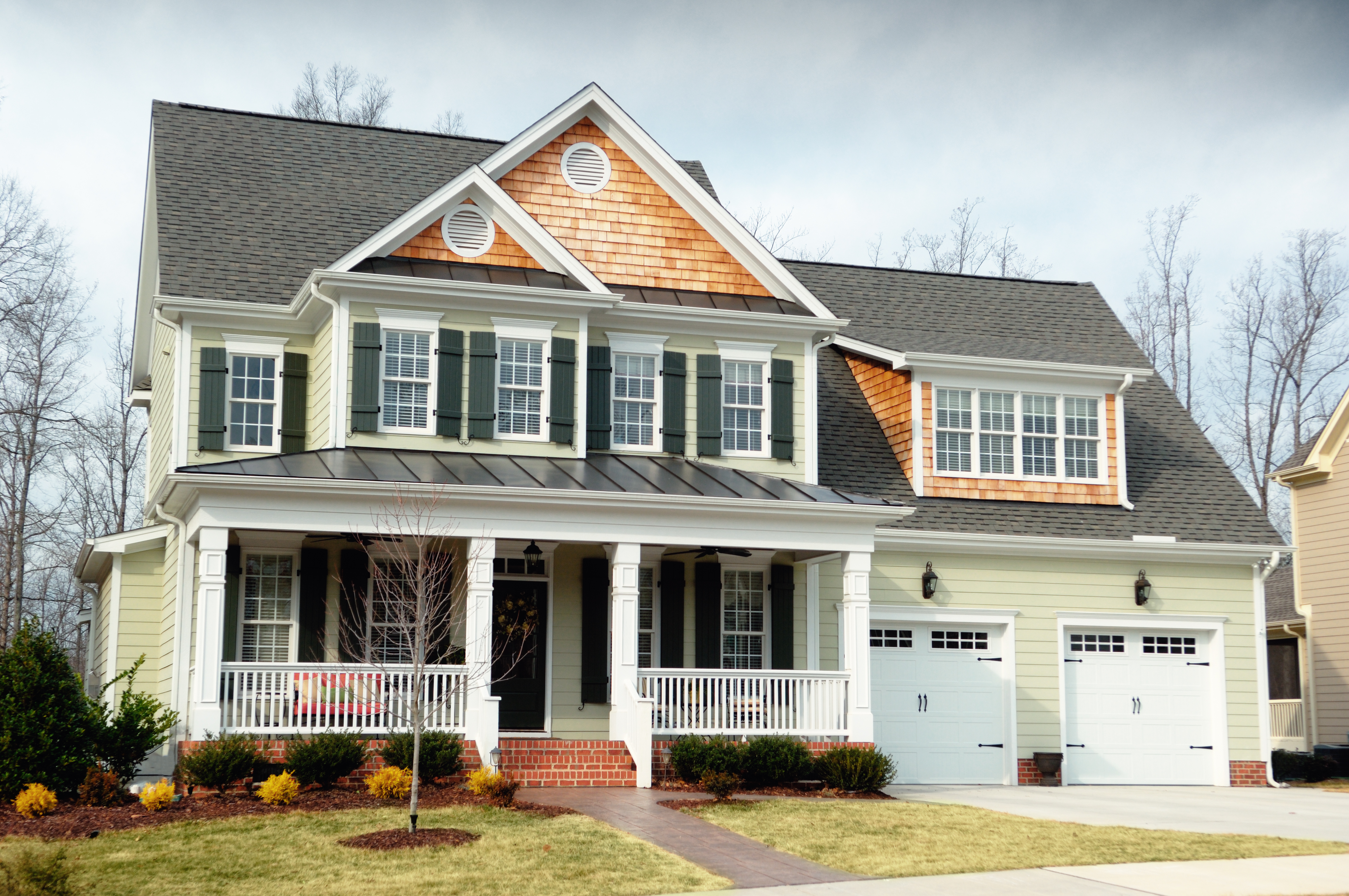
Dealing with a visibly damaged roof or leak? Learn about roof repair costs in Columbus to see how much you’ll need to budget for a permanent solution.
Don’t get hit with a surprising roof leak


Hail damage can be functional, cosmetic, or both.
Insurance companies often only cover functional damage.
Cracks, dents, bruises, granule loss, and broken shingles are the most common types of hail damage.
Forgoing roof repair or replacement can cause expensive leaks and water damage down the road.
Assess damage from the ground and leave a roof inspection to a professional to avoid personal injury.
Hailstones can travel up to 100 mph and be as large as 4 inches in diameter, potentially wreaking havoc on your home. It’s essential to know if hail damages your roof, as it can lead to leaks, water damage, and a shortened lifespan for your roof. But what does hail damage look like on a roof? You can spot some types of damage from the ground, but leave the trickier diagnoses to a pro.
Home insurance companies will want to know if the hail damage on your roof is “cosmetic” or “functional.” They may or may not pay for cosmetic damage, but they almost always cover functional damage.
Functional damage reduces the roof’s ability to shed water and decreases the roof's expected lifespan. Your roof’s material, such as wood, metal, asphalt, or composite, impacts what functional damage looks like.
Cosmetic damage affects the roof’s appearance, such as discoloration, minor granule loss to asphalt shingles, dented vents, gutters, and downspouts. Cosmetic issues don’t impact the roof’s lifespan or ability to shed water.
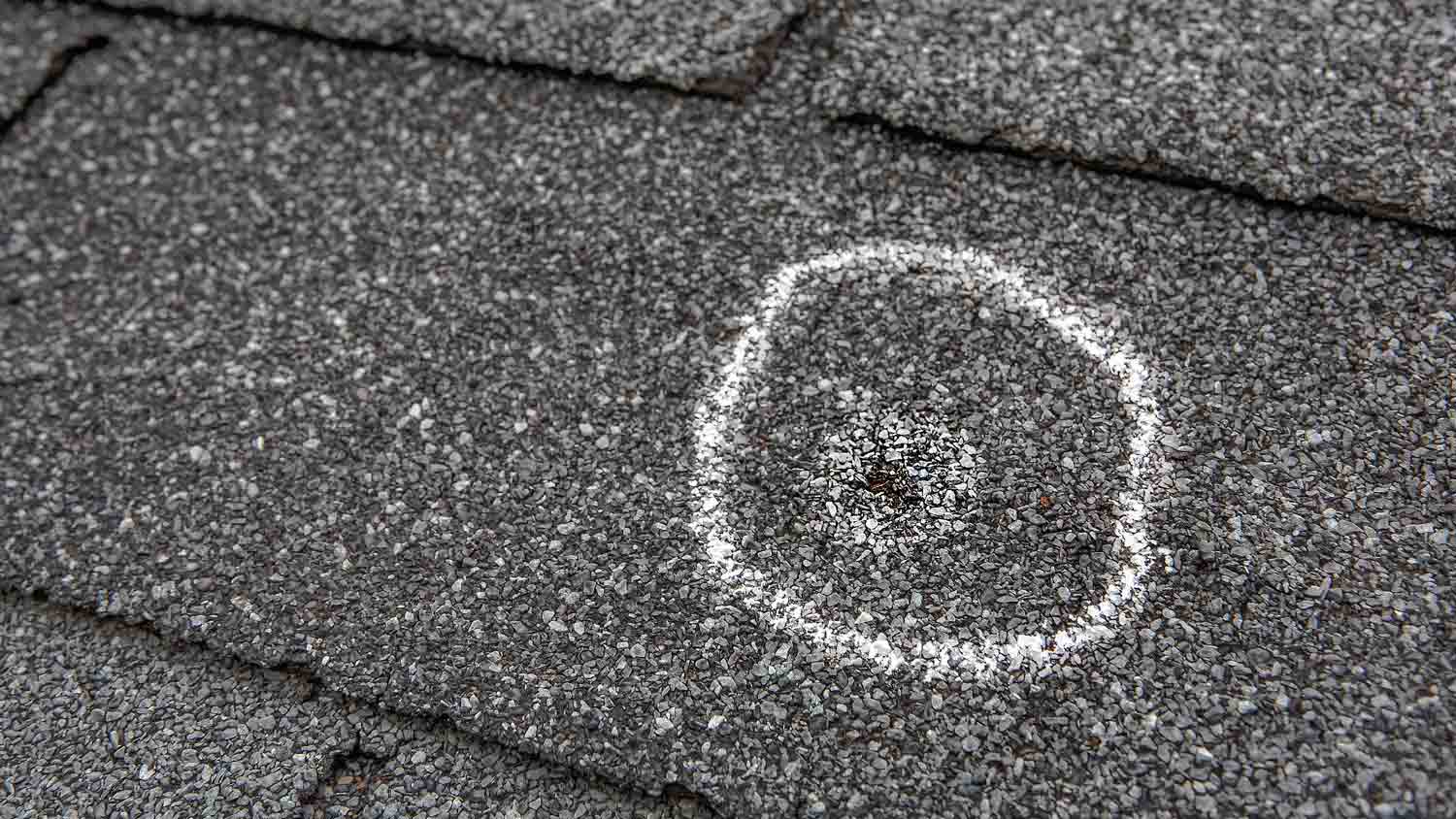
Because hailstones range in size and speed, the damage can look different depending on the storm. Your roof’s shingle material also impacts how hail damages it. Hail damage is often random, with no distinct pattern. Here’s what hail damage looks like on a roof.
Hailstones can leave dents, punctures, and a loss of granules (also known as bruises) on your roof, exposing the roof felt. Some minor dents and holes won’t lead to problems and are considered cosmetic. But larger loss of granules reduces the UV protection your roof provides. If punctures occur to the flashing and roof joints, the roof is more likely to leak.
If you have asphalt or composite shingles, the hail marks could be black or white. If you have a wood roof, the dents are visible by the color of unoxidized wood underneath the surface layer.
Hail can travel so fast that it can crack or split your shingles. The cracks can impact the roof’s ability to shed water, as it can penetrate deeper roof layers and cause leaks. Cracks are usually considered functional damage. Wood shingles are more likely to experience cracks than asphalt shingles.
Sometimes hail leaves shingles with noticeable damage and missing parts, such as broken edges and corners. Fractured shingles eventually fall off entirely.
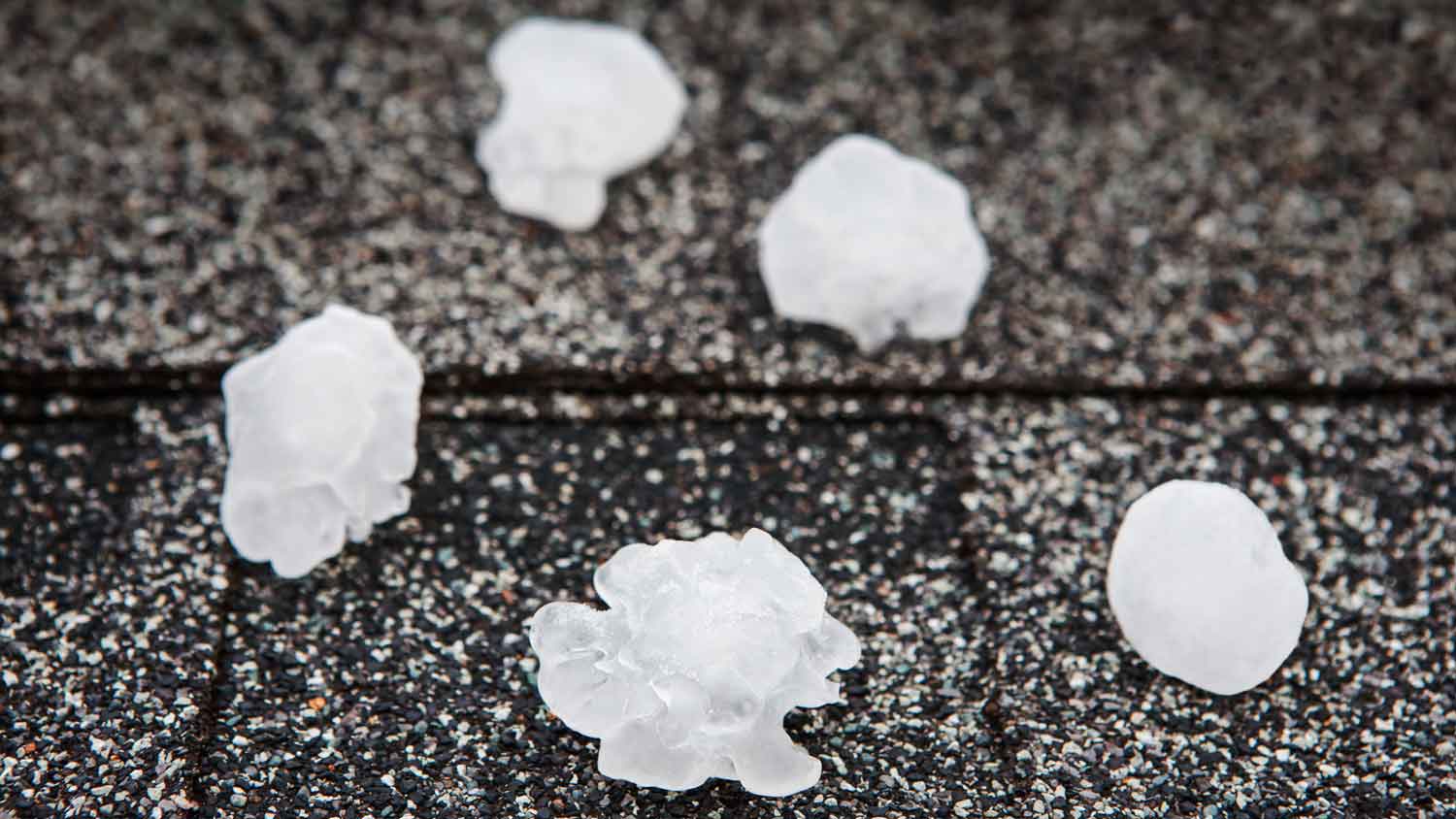
If you notice hailstones bigger than 1/4-inch in diameter or damage to your other property, such as your car, grill, or siding, it’s smart to check your roof for hail damage. The bigger the hailstones are, the faster they travel and the more damage they can cause.
Climbing up on a roof to look for damage is extremely unsafe unless you’re an experienced roofer or general contractor. If you suspect roof damage after a hailstorm, try to look at your home from a distance. You may want to use binoculars or a camera to get a closer look at the shingles.
Look for these indicators that are signs you could have hail damage on your roof:
Dents and damage to downspouts that are at least 5 feet above the ground
Dents or strikes on your garage door, siding, or shutters
Holes in your window screens
Marks or dings on your grill, AC unit, mailbox, and other soft metal equipment
Dents, cracks, and damage to your car
You can also contact your insurance company or get a free inspection from a local roofer. The best person to assess roof damage is a professional roof inspector, as they have the skills and equipment to get on your roof safely.
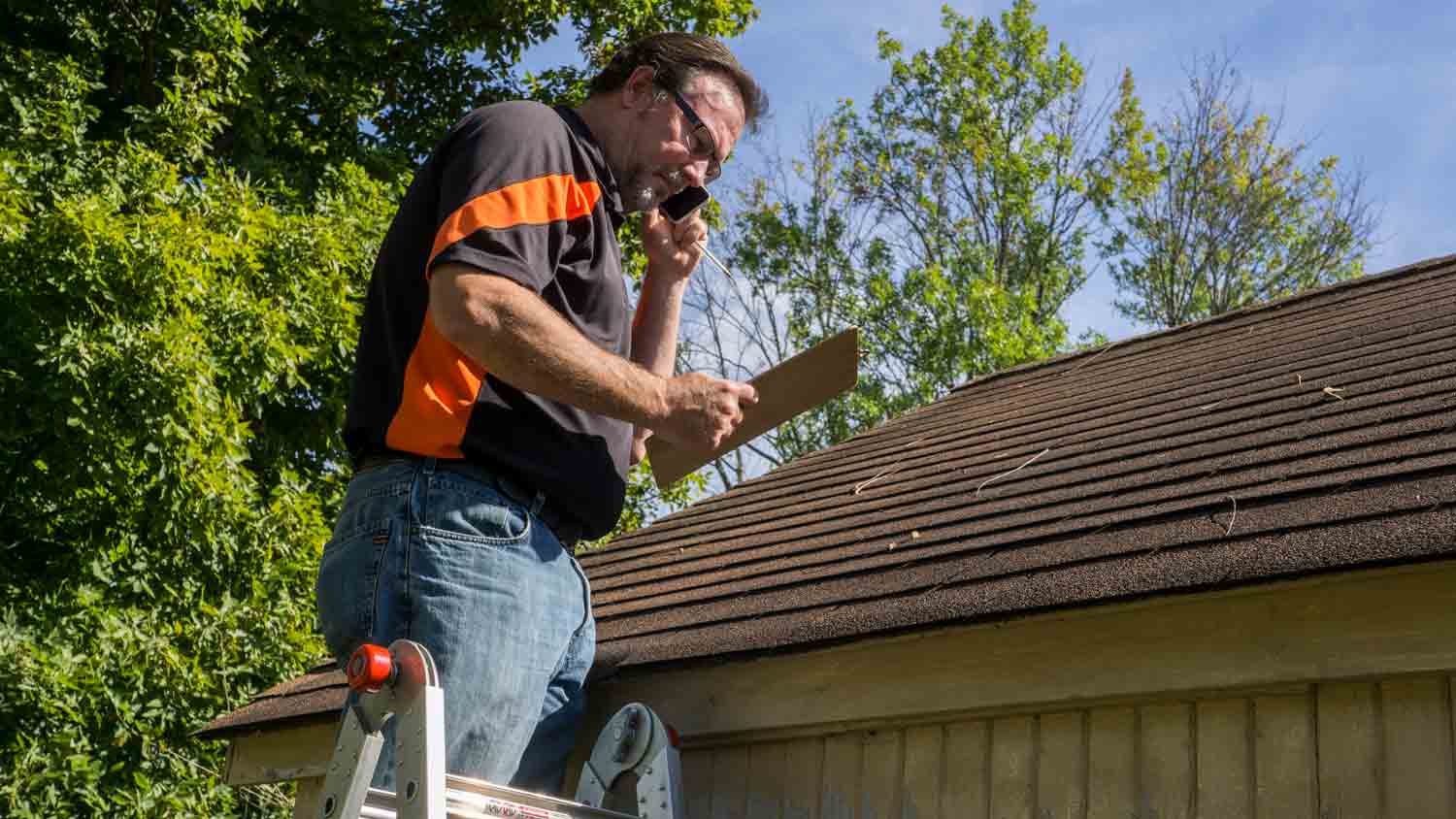
You should contact your home insurance company immediately if you suspect hail damage to your roof after a storm. You can file a hail damage insurance claim and then work with a local roof repair contractor to determine repair or replacement options and costs. You can reach out to a roofer first, but wait to pay for any repairs until your insurance company has approved your hail damage claim.
Roof repair for hail damage costs between $700 and $4,000, but costs depend on the size and material of your roof. If the hail damage is significant, you may need a total replacement. Roof replacement costs $9,200 on average, depending on the size of your roof, roof pitch, and materials.
It can be easy to confuse hail damage with other roof damage. Exposure to snow storms, ice, excessive sunlight, and different inclement weather can lead to roof damage. Normal wear and tear also impacts a roof's appearance and function, including cracking, flaking, and granule loss.
From average costs to expert advice, get all the answers you need to get your job done.

Dealing with a visibly damaged roof or leak? Learn about roof repair costs in Columbus to see how much you’ll need to budget for a permanent solution.

Learn about roof replacement costs in Columbus and what factors are at play to budget accurately and make sure you’re getting a fair price.
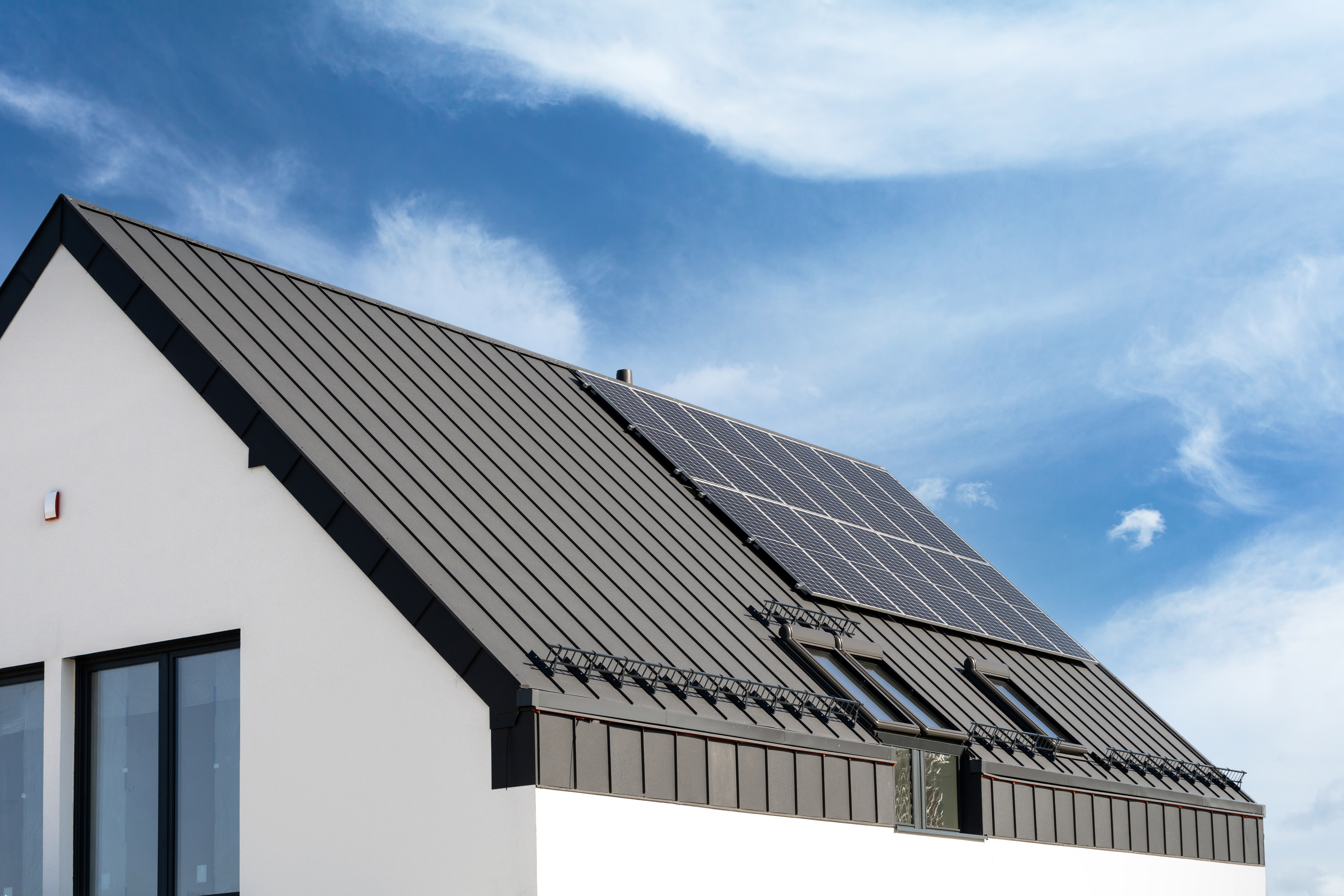
A metal roof can defend your home against Ohio’s varying weather conditions. Learn how much a metal roof costs in Columbus, OH.

Understanding the available types of roof trusses helps you create the desired shape and support for your roof. Learn more about the different options.

Sharpen your skills and smooth your cuts with this DIY guide to cutting metal roofing. We cover everything from measurements and safety gear to which tools will give you the cleanest cut.

If you’re upgrading your roof with stone-coated steel, you should be aware of the total project cost. Learn what will impact your final stone-coated steel roofing costs.